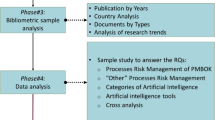Abstract
As project development gets more intensive, there are increasing needs of development support by reusing shared knowledge objects, such as technical know–how and project achievements, which grow along with developers’ activities through multiple support systems. However, there is a large gap of knowledge in providing such development support, because of developers’ divergent background knowledge, as well as distinct personal preferences in using different support systems. To bridge the knowledge gap, the major challenge is to improve the information coverage in correlating the knowledge from different support systems. This challenge derives two issues: one is the development data analytics to have a deep insight to the correlations among the knowledge objects that are developing and growing; and the other is the development system integration to utilize knowledge objects that are stored in different support systems. For development data analytics, we propose the development activity awareness using the terms-frequency and chained links-ratio (TFCLR) to measure the integrated contextual and relational correlation among knowledge objects. For development system integration, we implement the seamless repository as an integrated development environment. We experiment with the activity awareness for development support on the ICT field with English conducted as medium of development. The seamless repository integrates multiple support systems to cover more knowledge objects. And in comparison with other mentioned knowledge correlation measures, the one using TFCLR covers the most detailed information in knowledge objects. The quantified and visualized knowledge correlation produced by this study is a useful tool to bridge the knowledge gap in development.











Similar content being viewed by others
References
Cusumano M, Yoffie DB et al (1999) Software development on internet time. Computer 32(10):60–69
Fuggetta A (2000) Software process: a roadmap. In: Proceedings of the conference on the future of software engineering, ICSE ’00, ACM, New York, pp 25–34. http://doi.acm.org/10.1145/336512.336521
Benner KM, Feather MS, Johnson WL, Zorman LA (2014) Utilizing scenarios in the software development process. Inf Syst Dev Process 30:117–134
Centers for Medicare & Medicaid Services (2005) Selecting a development approach. https://www.cms.gov/Research-Statistics-Data-and-Systems/CMS-Information-Technology/XLC/Downloads/SelectingDevelopmentApproach.pdf. Accessed May 2015
Bertram D, Voida A, Greenberg S, Walker R (2010) Communication, collaboration, and bugs: the social nature of issue tracking in small, collocated teams. In: Proceedings of the 2010 ACM conference on computer supported cooperative work, CSCW ’10, ACM, New York, pp 291–300
Redmine: a flexible project management web application. https://www.atlassian.com/software/jira. Accessed Jan 2015
Kanai J, Anderson M (2013) Redmine as a web-based collaboration tool in engineering design courses. In: 2013 ASEE annual conference & exposition. https://www.asee.org/public/conferences/20/papers/7960/view. Accessed Jan 2015
Gowtham S (2014) Revision control system (RCS) in computational sciences and engineering curriculum. In: Proceedings of the 2014 annual conference on extreme science and engineering discovery environment, XSEDE ’14, ACM, New York, pp 76:1–76:3 [Online]. http://doi.acm.org/10.1145/2616498.2616576
Leuf B, Cunningham W (2001) The Wiki way: quick collaboration on the web. Addison-Wesley Longman Publishing Co., Inc., Boston
MediaWiki: a free software open source wiki package written in PHP. https://www.mediawiki.org/wiki/MediaWiki. Accessed Jan 2015
Loeliger J, McCullough M (2012) Version control with Git: powerful tools and techniques for collaborative software development. O’Reilly Media, Inc, Sebastopol
GitLab: create, review and deploy code together. https://gitlab.com. Accessed Jan 2015
Patel SK, Rathod VR, Parikh S (2011) Joomla, Drupal and WordPress—a statistical comparison of open source CMS. In: Trendz in information sciences and computing (TISC), 2011 3rd International Conference, IEEE, pp 182–187
Burke R (2002) Hybrid recommender systems: survey and experiments. User Model User Adapt Interact 12(4):331–370
Balabanović M, Shoham Y (1997) Fab: content-based, collaborative recommendation. Commun ACM 40(3):66–72
Linden G, Smith B, York J (2003) Amazon. com recommendations: item-to-item collaborative filtering. IEEE Internet Comput 7(1):76–80
Rajaraman A, Ullman JD (2011) Data mining. In: Mining of massive datasets. Cambridge University Press, Cambridge, pp 1–17 (Cambridge Books Online)
Huang A (2008) Similarity measures for text document clustering. In: Proceedings of the sixth New Zealand computer science research student conference (NZCSRSC2008), Christchurch, pp 49–56
Strehl A, Ghosh J, Mooney R (2000) Impact of similarity measures on web-page clustering. In: Workshop on artificial intelligence for web search (AAAI 2000), pp 58–64
Wu Y, Wang J, Hsu H-H, Cheng Z (2016) A seamless repository for pervasive teamwork. Int J Web Grid Serv 12:273–295
Wu Y, Sato K, Jing L, Wang J, Cheng Z (2015) The lean awareness in software-intensive engineering: experience from one project. In: Awareness science and technology (iCAST), 2015 IEEE 7th international conference, pp 168–173
Wu Y, Wang J, Jing L, Zhou Y, Cheng Z (2015) A CICO system based on BLE proximity. In: Awareness science and technology (iCAST), 2015 IEEE 7th international conference, pp 180–183
Acknowledgements
This research was partially supported by JST-NSF joint funding, Strategic International Collaborative Research Program, SICORP, entitled “Dynamic Evolution of Smartphone-Based Emergency Communications Network”, from 2015 to 2018.
Author information
Authors and Affiliations
Corresponding author
Rights and permissions
About this article
Cite this article
Wu, Y., Wang, J. & Cheng, Z. Activity awareness for development support based on seamless repository. Int. J. Mach. Learn. & Cyber. 10, 59–74 (2019). https://doi.org/10.1007/s13042-017-0700-x
Received:
Accepted:
Published:
Issue Date:
DOI: https://doi.org/10.1007/s13042-017-0700-x




